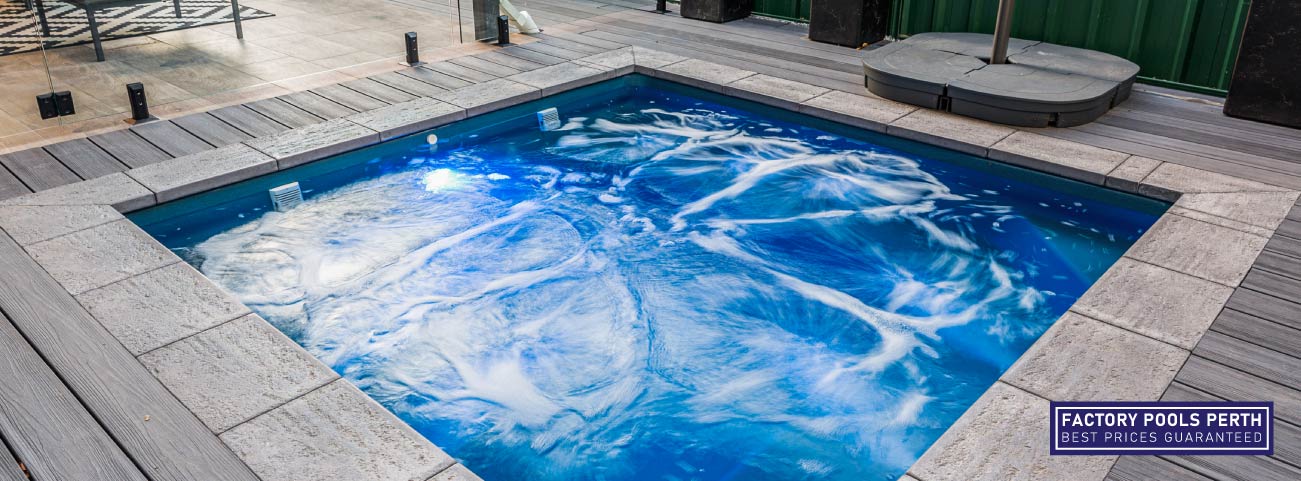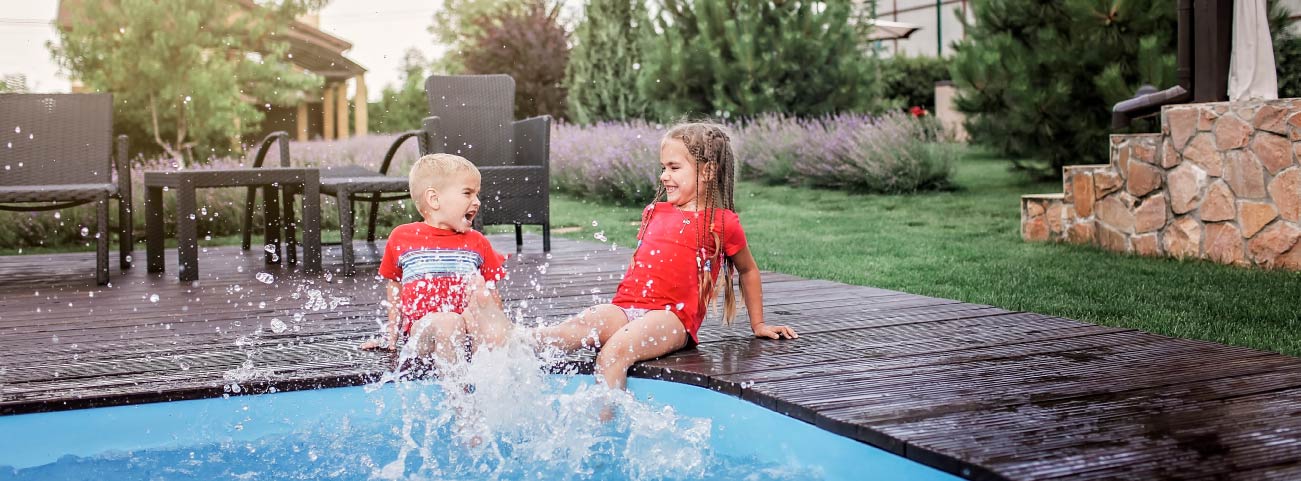Spas vs. Swim Spas
Designing your dream backyard oasis involves making important decisions, including whether to install a spa or a swim spa. Both options offer unique features and benefits that can enhance your relaxation and overall well-being. However, choosing between a traditional spa and a swim spa requires careful consideration of various factors. In this blog post, we will delve into the world of spas and swim spas, comparing their features, benefits, and considerations. By understanding the key differences, you can make an informed choice that aligns with your lifestyle, preferences, and budget. Let's explore the factors that will help you decide which option is the better fit for your backyard oasis.

Which Is the Better Option?
Features and Functionality
Spas and swim spas have distinct features and functionalities that cater to different needs. Let’s take a closer look at each option:
- Spas: Spas, also known as hot tubs, are designed primarily for relaxation and hydrotherapy. They typically feature jets that provide soothing massages to help alleviate stress and muscle tension and promote better circulation. Spas often accommodate multiple people with various seating options, allowing you to enjoy the experience with family and friends. Advanced spa models may include additional features such as built-in speakers, LED lighting, and aromatherapy options, enhancing the overall spa experience.
- Swim Spas: Swim spas offer the benefits of both a spa and a swimming pool. They feature a powerful adjustable current that allows you to swim in place, providing a continuous swimming experience. Swim spas are ideal for individuals who enjoy swimming for exercise or therapeutic purposes but have limited space. Many swim spas also include seating areas with hydrotherapy jets, allowing for relaxation and massage benefits similar to a traditional spa. This versatility makes swim spas a popular choice among homeowners seeking a combination of fitness, relaxation, and hydrotherapy in one unit.
Space and Installation
The available space in your backyard and the installation requirements are crucial factors to consider when deciding between a spa and a swim spa:
- Spas: Spas are relatively compact and require less space compared to swim spas. They can be installed on a patio, deck, or even indoors, depending on your preference and available space. Spas are typically self-contained units, making them easier to integrate into existing outdoor spaces. However, it’s essential to ensure you have sufficient space not just for the spa itself but also for any additional accessories such as a cover and steps.
- Swim Spas: Swim spas are larger in size and resemble a mini swimming pool. They require more space for installation, both in terms of length and width. Depending on your preference and available space, swim spas can be installed either above ground or inground. Inground installation may require excavation and additional construction work, whereas above-ground options are generally more straightforward. It’s important to consult with a professional to determine the best installation method for your specific backyard space.

Health and Fitness Benefits
Both spas and swim spas offer various health and fitness benefits. Let’s explore the advantages of each option:
- Spas: Spas are renowned for their therapeutic benefits. The combination of warm water, buoyancy, and massage jets can help relieve muscle soreness, improve circulation, and reduce stress. Soaking in a spa can promote relaxation, alleviate tension headaches, and contribute to better sleep quality. The hydrotherapy jets in spas can target specific areas of the body, providing customised massage experiences. Additionally, the warm water of a spa can help ease joint pain and stiffness, making it an excellent option for individuals with arthritis or other musculoskeletal conditions.
- Swim Spas: Swim spas provide not only relaxation but also an opportunity for low-impact exercise and aquatic therapy. The adjustable current allows you to swim against resistance, providing an effective cardiovascular workout. Swim spas are ideal for individuals who want to swim for fitness or rehabilitation purposes but have limited space for a traditional swimming pool. The hydrotherapy jets in the seating area of swim spas offer therapeutic benefits similar to a spa, allowing for relaxation and muscle recovery after exercise. The combination of swimming and hydrotherapy makes swim spas a versatile choice for individuals seeking a comprehensive wellness solution.
Maintenance and Operating Costs
Considering the maintenance and operating costs is essential to make an informed decision. Let’s discuss the key factors to consider for each option:
- Spas: Spas require regular maintenance to ensure water cleanliness and optimal performance. This includes monitoring and adjusting chemical levels, cleaning the filter, and periodically draining and refilling the water. The operating costs of spas depend on factors such as insulation, size, and usage frequency. Energy-efficient spa models and proper insulation can help minimise energy consumption and reduce monthly costs. It’s also recommended to invest in a spa cover to retain heat and prevent debris from entering the water, reducing maintenance efforts and costs.
- Swim Spas: Swim spas also require routine maintenance to keep the water clean and the components in good condition. This includes balancing water chemistry, cleaning the filter, and regularly inspecting the current system. Due to their larger water volume, swim spas may require more chemicals and increased heating costs compared to spas. However, energy-efficient features and insulation can help mitigate operating costs. Like spas, swim spas benefit from using a cover to retain heat and minimise debris accumulation.

Conclusion
Choosing between a spa and a swim spa depends on your specific needs, preferences, available space, and budget. Spas provide a dedicated space for relaxation, hydrotherapy, and socialising, while swim spas combine the benefits of a spa and a swimming pool, offering both fitness and relaxation opportunities. By considering factors such as features, functionality, space requirements, health benefits, and maintenance costs, you can make an informed decision.
Factory Pools Perth has a range of fibreglass spas available as standalones or as an add on to one of our gorgeous fibreglass pools. If you have a question about how much it may cost to get a fibreglass pool and spa bundle or just a spa, feel free to get in touch with our friendly team!
Spas vs. Swim Spas
Designing your dream backyard oasis involves making important decisions, including whether to install a spa or a swim spa. Both options offer unique features and benefits that can enhance your relaxation and overall well-being. However, choosing between a traditional spa and a swim spa requires careful consideration of various factors. In this blog post, we will delve into the world of spas and swim spas, comparing their features, benefits, and considerations. By understanding the key differences, you can make an informed choice that aligns with your lifestyle, preferences, and budget. Let's explore the factors that will help you decide which option is the better fit for your backyard oasis.

Which Is the Better Option?
Features and Functionality
Spas and swim spas have distinct features and functionalities that cater to different needs. Let’s take a closer look at each option:
- Spas: Spas, also known as hot tubs, are designed primarily for relaxation and hydrotherapy. They typically feature jets that provide soothing massages to help alleviate stress and muscle tension and promote better circulation. Spas often accommodate multiple people with various seating options, allowing you to enjoy the experience with family and friends. Advanced spa models may include additional features such as built-in speakers, LED lighting, and aromatherapy options, enhancing the overall spa experience.
- Swim Spas: Swim spas offer the benefits of both a spa and a swimming pool. They feature a powerful adjustable current that allows you to swim in place, providing a continuous swimming experience. Swim spas are ideal for individuals who enjoy swimming for exercise or therapeutic purposes but have limited space. Many swim spas also include seating areas with hydrotherapy jets, allowing for relaxation and massage benefits similar to a traditional spa. This versatility makes swim spas a popular choice among homeowners seeking a combination of fitness, relaxation, and hydrotherapy in one unit.
Space and Installation
The available space in your backyard and the installation requirements are crucial factors to consider when deciding between a spa and a swim spa:
- Spas: Spas are relatively compact and require less space compared to swim spas. They can be installed on a patio, deck, or even indoors, depending on your preference and available space. Spas are typically self-contained units, making them easier to integrate into existing outdoor spaces. However, it’s essential to ensure you have sufficient space not just for the spa itself but also for any additional accessories such as a cover and steps.
- Swim Spas: Swim spas are larger in size and resemble a mini swimming pool. They require more space for installation, both in terms of length and width. Depending on your preference and available space, swim spas can be installed either above ground or inground. Inground installation may require excavation and additional construction work, whereas above-ground options are generally more straightforward. It’s important to consult with a professional to determine the best installation method for your specific backyard space.

Health and Fitness Benefits
Both spas and swim spas offer various health and fitness benefits. Let’s explore the advantages of each option:
- Spas: Spas are renowned for their therapeutic benefits. The combination of warm water, buoyancy, and massage jets can help relieve muscle soreness, improve circulation, and reduce stress. Soaking in a spa can promote relaxation, alleviate tension headaches, and contribute to better sleep quality. The hydrotherapy jets in spas can target specific areas of the body, providing customised massage experiences. Additionally, the warm water of a spa can help ease joint pain and stiffness, making it an excellent option for individuals with arthritis or other musculoskeletal conditions.
- Swim Spas: Swim spas provide not only relaxation but also an opportunity for low-impact exercise and aquatic therapy. The adjustable current allows you to swim against resistance, providing an effective cardiovascular workout. Swim spas are ideal for individuals who want to swim for fitness or rehabilitation purposes but have limited space for a traditional swimming pool. The hydrotherapy jets in the seating area of swim spas offer therapeutic benefits similar to a spa, allowing for relaxation and muscle recovery after exercise. The combination of swimming and hydrotherapy makes swim spas a versatile choice for individuals seeking a comprehensive wellness solution.
Maintenance and Operating Costs
Considering the maintenance and operating costs is essential to make an informed decision. Let’s discuss the key factors to consider for each option:
- Spas: Spas require regular maintenance to ensure water cleanliness and optimal performance. This includes monitoring and adjusting chemical levels, cleaning the filter, and periodically draining and refilling the water. The operating costs of spas depend on factors such as insulation, size, and usage frequency. Energy-efficient spa models and proper insulation can help minimise energy consumption and reduce monthly costs. It’s also recommended to invest in a spa cover to retain heat and prevent debris from entering the water, reducing maintenance efforts and costs.
- Swim Spas: Swim spas also require routine maintenance to keep the water clean and the components in good condition. This includes balancing water chemistry, cleaning the filter, and regularly inspecting the current system. Due to their larger water volume, swim spas may require more chemicals and increased heating costs compared to spas. However, energy-efficient features and insulation can help mitigate operating costs. Like spas, swim spas benefit from using a cover to retain heat and minimise debris accumulation.

Conclusion
Choosing between a spa and a swim spa depends on your specific needs, preferences, available space, and budget. Spas provide a dedicated space for relaxation, hydrotherapy, and socialising, while swim spas combine the benefits of a spa and a swimming pool, offering both fitness and relaxation opportunities. By considering factors such as features, functionality, space requirements, health benefits, and maintenance costs, you can make an informed decision.
Factory Pools Perth has a range of fibreglass spas available as standalones or as an add on to one of our gorgeous fibreglass pools. If you have a question about how much it may cost to get a fibreglass pool and spa bundle or just a spa, feel free to get in touch with our friendly team!



